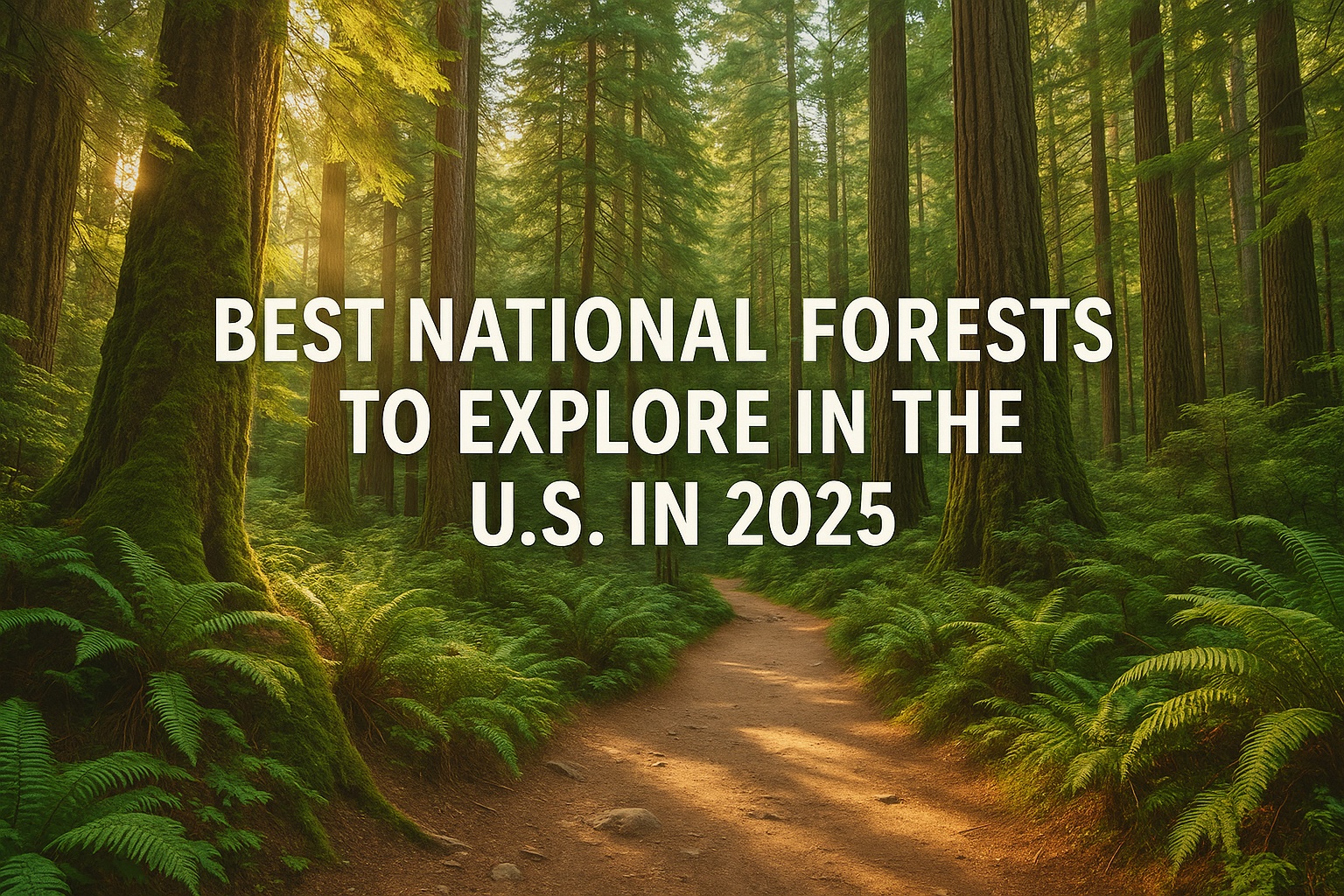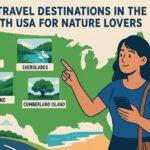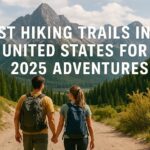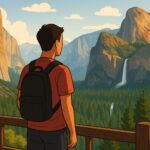While national parks often steal the spotlight, America’s national forests offer equally stunning landscapes — with fewer crowds and greater freedom. Whether you love hiking, camping, wildlife watching, or scenic drives, the best national forests in the U.S. provide vast, untouched beauty and unforgettable outdoor adventures.
In 2025, take the road less traveled and explore these incredible forest escapes across the country.
1. Pisgah National Forest (North Carolina)
Home to waterfalls, rugged mountains, and lush hardwood forests, Pisgah is a paradise for hikers and campers. Explore Looking Glass Rock, bike the Blue Ridge Parkway, or camp under the stars in Davidson River Campground.
2. Bridger-Teton National Forest (Wyoming)
Bordering Grand Teton and Yellowstone National Parks, this massive forest offers over 3.4 million acres of pristine wilderness. Hike to alpine lakes, fish remote streams, or boondock along scenic byways for solitude and epic views.
3. White River National Forest (Colorado)
With 12 ski areas, 10 wilderness zones, and miles of summer trails, White River is Colorado’s backyard for outdoor fun. Explore Maroon Bells, hike near Vail or Aspen, and enjoy scenic camping in Glenwood Canyon.
4. Tongass National Forest (Alaska)
The largest national forest in the U.S., Tongass is a temperate rainforest of glaciers, fjords, and wildlife. Take a ferry through the Inside Passage, hike in Misty Fjords, or kayak near Juneau — wild Alaska at its finest.
5. Deschutes National Forest (Oregon)
Centered around Bend, this forest features lava tubes, mountain lakes, and alpine trails. Paddle the Cascade Lakes, hike South Sister, or bike forest trails surrounded by volcanic beauty and pine-scented air.
6. Superior National Forest (Minnesota)
Bordering Canada, this forest includes the famed Boundary Waters Canoe Area Wilderness. Paddle isolated lakes, camp on your own island, and enjoy complete immersion in nature without road noise or crowds.
7. Coconino National Forest (Arizona)
From red rock canyons in Sedona to alpine peaks near Flagstaff, Coconino is full of contrast. Hike Cathedral Rock, explore lava caves, or stargaze from forest campsites far from city lights.
8. Green Mountain National Forest (Vermont)
This lush forest in the heart of New England is known for rolling hills, covered bridges, and the Long Trail — America’s oldest long-distance hiking route. Fall colors are stunning, but summer offers solitude and serenity.
9. Dixie National Forest (Utah)
Spanning from Zion to Bryce Canyon, Dixie offers towering cliffs, alpine lakes, and red rock formations. Hike in the high-elevation Cedar Breaks area or camp under clear skies near Panguitch Lake.
10. Siuslaw National Forest (Oregon Coast)
This unique coastal forest blends ocean views, sand dunes, and moss-covered trails. Camp near the Pacific, hike through Sitka spruce, or kayak tidal estuaries rich with wildlife and birdlife.
Why Choose National Forests?
- Fewer crowds: More space and freedom compared to popular national parks.
- More flexible camping: Dispersed camping is often allowed outside developed sites.
- Pet-friendly: National forests tend to have looser leash laws for dogs.
- Diverse terrain: From deserts to rainforests, each forest offers something unique.
Best Time to Visit National Forests
- June – September: Ideal for high-elevation and northern forests.
- May and October: Great shoulder seasons for fewer crowds and fall colors.
- Morning starts: Beat the summer heat and spot more wildlife on early hikes.
Tips for Forest Adventures
- Use forest maps: Cell service is often limited — download maps or get paper versions at ranger stations.
- Pack out everything: Many sites have no trash services — follow Leave No Trace.
- Camp responsibly: Use fire rings where available and keep campfires small.
- Check alerts: Forest roads and trails may be closed due to fire, snow, or restoration work.
Final Thoughts
If you’re seeking peace, beauty, and a deeper connection to the outdoors, the best national forests in the U.S. offer it all. From the mossy trails of Oregon to the alpine peaks of Colorado and the canoe routes of Minnesota, these wild places are waiting for you to explore.
In 2025, skip the lines and discover the quieter side of American wilderness — the forests where adventure still feels free.







